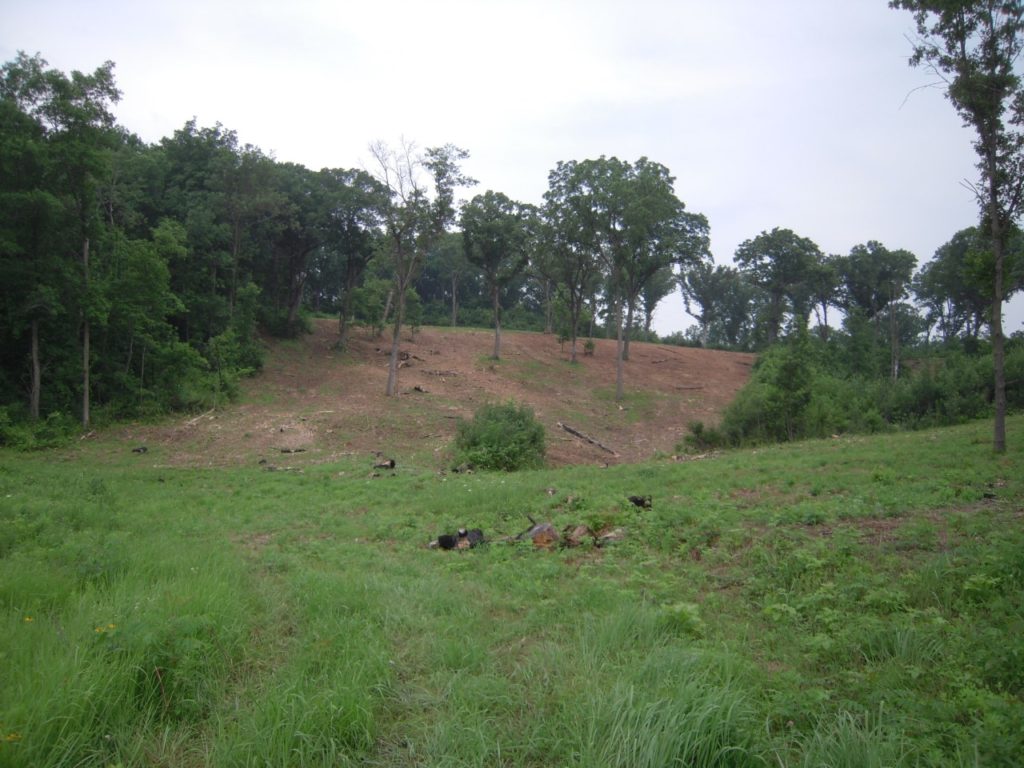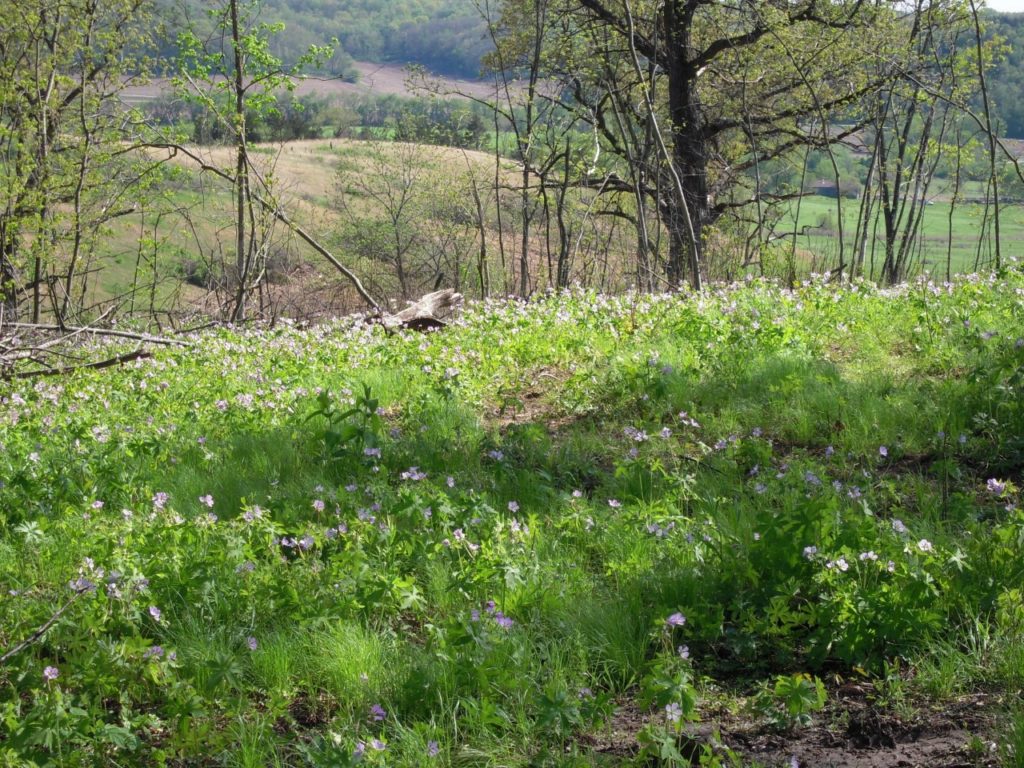
Patience, Creativity, and Hard Work to Realize Restoration Success
Doug Steege and Kris Euclid are owners of a mix of prairie and woodlands straddling the border between Dane and Iowa Counties in the Driftless Region. And though the peak period in summer burn season demands the most time commitment, they find themselves with plenty of restoration projects during the winter months.
Winter Projects
“Clearing out under the oak trees and burning brush piles is our primary winter activity,” says Doug. “This year we had an early Christmas gathering with our family, and on Solstice, we lit a couple of brush piles at twilight. That was fun for the kids, especially.”

“We also collected a significant amount of seed on our property this past year, and when it snowed, we finally got a chance to scatter those seeds.”
Doug and Kris have restored the natural areas on their land using only seeds that they collect on the property. Kris concentrates on seed collection, and they plant most of what she gathers into the areas that don’t have a good population of native plants yet.
Starting on the Ridge Tops
While living in Madison in the 1970s, Doug and Kris became interested in what they could do with a rural property. Their land search ended when they found themselves climbing a ridge on a 134-acre property in western Dane County in early March, 1978 where pasque flowers were blooming in profusion.
They did their first prescribed burn in the spring of 1979, but found themselves steadily falling behind as invasives took hold and gained ground.
By 2005, the year their youngest child went off to college, the herbaceous growth had filled in their ridges to the point where it was shading out the prairie remnants, and small groves of trees had sprung up in the valley that was originally tilled farmland.
“We started to spend more time and money on restoration activities,” Doug remembers. “We hired a prairie specialist for advice and labor.” Beginning in 2005, they cleared all the cedars from the ridge tops.
“Besides clearing, stacking, burning brush piles, and herbiciding the woody invasives, we have been conducting prescribed burns annually since 2005,” says Doug. “We had only burned three times in the 25 years before. Now we do annual burns of about 100 acres.”
Getting Extra Help
In 2010, Doug and Kris deeded a conservation easement on their land to The Prairie Enthusiasts (TPE) and created a management plan together. Doug and Kris have pioneered an arrangement with TPE, along with other conservancies that have easements held by TPE, where they share a land manager. They pay 20% of his salary, and the manager works on their easement year round, one day a week. Two other conservancies pay for a portion of his work week. The remainder of his time is spent on TPE’s own properties.
They also have an arrangement to pay for one day a week during the summer for a team of college interns hired by TPE to work on their land for three months in the summer.
“We have made some real big progress,” says Doug. “One of our ridges was heavily infested with spotted knapweed. We have really good prairie remnants up there, so we can’t use herbicides. It’s taken a huge amount of handwork over the last six years, but it is almost under control.”
Returning the overgrown woods to savannas is another ongoing project. You can see these majestic oaks on the 1935 aerial photographs. “All that was there at that time were these large oaks,” Doug says. “Now it’s turned into a woods, but we are trying to free the oaks up again.”

Opening up the woods has also helped with the garlic mustard control. “Originally, we had no garlic mustard, but it has come into our woods,” says Doug. “We have found that if we can run fire through the woods where the garlic mustard is for two years in a row, that pretty much wipes it out. We still have some, but we are working on thinning out the overstory and woody shrubs in order to get enough sunlight to the ground so there is enough vegetative growth to burn well.”
In the past, Doug and Kris have also gotten some support from the U.S. Fish and Wildlife Service and Wisconsin DNR grant programs to take out a fence row between one of the ridges and some formerly tilled land they are replanting as prairie.
“Fence rows are one of the only places that many natives have hung on, and we had good things in ours,” says Doug, “so we had to be careful. It was a jangled mess of invasives, made more difficult with barbed wire in the equation.”
Currently they are receiving some funding from a DNR program for controlling invasives in woodlands, which they applied for as a group with several neighbors.

Adding a Wetland
More recently, the Steeges added a creek and 50 acres of wetland to their restoration agenda. “Our property line ran along the Iowa-Dane County line, but it was hard to maintain fire breaks along that artificial line,” says Doug. “We purchased our neighbor’s property on our side of the creek, and now Blue Mounds Creek is a natural firebreak.”
The wetlands had been pastured, but there were still a few prairie plants. “We’ve been really working to get those areas going again. When we see a population like yellow loosestrife that is native and does well in wet prairies, we are spreading that species around.”
The time Doug and Kris put in varies a lot depending on what they have going on and how good the working conditions are, but averages 20 hours a week. With their own hard work along with their creative approach to finding grants and sharing the cost of expert land managers, Doug and Kris have made great strides in restoring a beautiful parcel of land to something like its pre-settlement natural state.
Written by Denise Thornton, Driftless Landowner and Environmental Blogger for digginginthedriftless.com.
